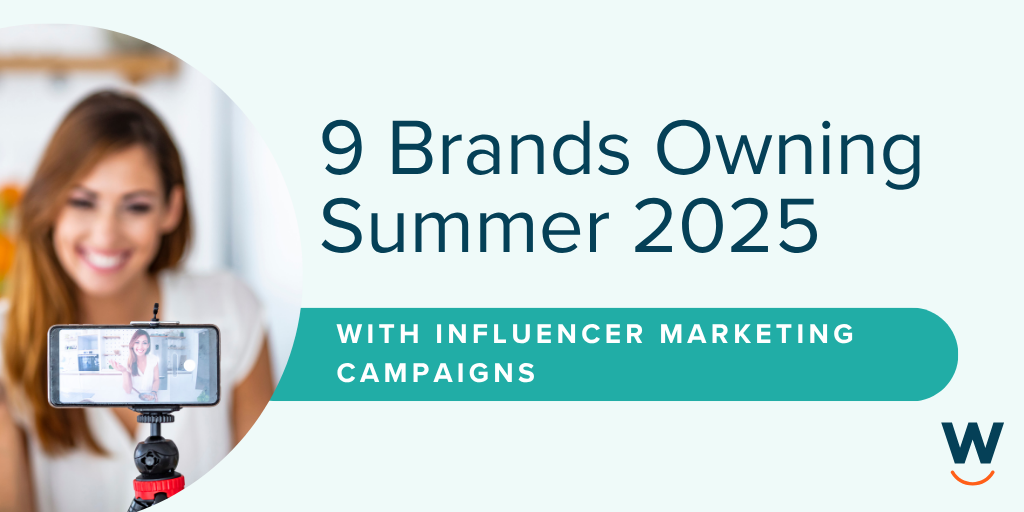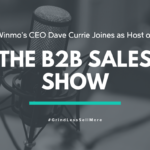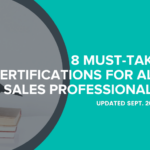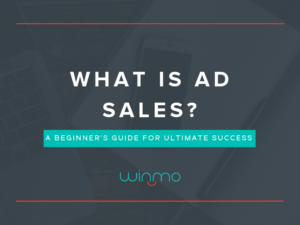
What is Ad Sales? A Beginner’s Guide For Ultimate Success
Ad sales can be quite complex. As a newbie to the industry who’s hungry for success, it’s likely you have many questions. Through this guide, we’re break down ad sales step by step to help you understand the full scope of the industry, the expectations, the processes and more. Ready to become a bad@#$ ad seller?
Ad Sales In Media
\As an advertising or media sales representative, you’ll likely work for an employer in the media industry. This might include outdoor, newspaper or online publishers, or possibly even radio or TV stations. Think about it this way, any time you’ve ever seen a commercial on TV, there was a media seller who sold that spot to a brand because YOU were the audience in which that brand was attempting to reach.
The media industry faces some of the biggest challenges today. Ad sellers face a rate of change that is arguably greater than any other industry. Media is consumed everywhere and ad sellers are constantly challenged with where and how to capture the attention of the right people at the right time.
The job requirements of an ad seller differ according to the nature of the employer. But day-to-day tasks typically include persuading clients to buy advertising space or time. The best way to explain the value to a prospect is explaining the benefits of your medium and providing viewing figures to add credibility to your proposition- we will dive into detail on how to do this later on so stick with us!
The Ad Sales Process
Selling advertising space to other companies requires a great deal of patience and planning in order to be effective.
The first step in any ad sales process is proactively prospecting for potential clients. This step isn’t optional if you want to be successful in the sales world, and the ultimate goal is to build a sales pipeline by consistently connecting with potential customers.
When reaching out to prospects, many factors come into play. Not only targeting the right segments, but your sales positioning and the timing of your outreach. 64% of customers are more willing to have a conversation when they have dollars available in their advertising budget.
In order to connect with the correct decision-maker at precisely the right time, we recommend following these six tips:
1. Define your audience
The idea of prospecting can be overwhelming, but defining your audience is the ideal place to start. By defining the characteristics of your ideal partners, you can narrow the field to a more manageable search of who exactly your target audience is and the best way to reach them. Winmo revs up prospecting efforts with powerful sales intelligence that allows you to source leads quickly and accurately. Our team of researchers works to find contacts at hard-to-reach agencies, provide sales predictions, and stay on top of what media clients are buying, and we house all of this information under one roof in our platform.
Instead of doing this work internally, invest in a tool that allows you to prospect at scale so that you can spend more time selling. Winmo allows you to nail your outreach by providing details on when advertisers are planning and buying media, and edge out your competitors with sales predictions. Winmo will also provide agency related contacts working on specific brand accounts so that you can craft your pitches precisely and with confidence. Request a Winmo demo today and try it out for yourself.
2. Personalize your outreach
In order to stand out from the crowd, it’s imperative to personalize your outreach. Shooting out a generic email to a big list of contacts is not the way to go. Rather than sending emails with your fingers crossed hoping to get a response, make your efforts count and provide relevant and interesting information in your prospect’s inbox. Personalization demonstrates your willingness to speak directly to a prospect and work a little harder for the sale.
3. Strike while the iron is heating up
In business, timing is everything. It’s critical to pitch to a prospect when they’re ready to buy. In order to stay one step ahead of your competition, prospect proactively and keep an eye out for business triggers such as new hires, new funding, spending shifts, and product launches to name a few. We will break down each of these and more later on in this article.
4. Make prospecting a habit
Prospecting is not optional if you want to be successful in the sales world. In order to keep it a priority, we recommend blocking time out each day to update lists, craft emails, and follow up with potential prospects. Prospecting is important because it creates opportunities, and we’ve got the numbers to prove it.
Unproductive prospecting wastes 50% of sales time for the average sales rep. Forming productive prospecting habits is the first step to overcoming that statistic. Consistency counts when it comes to prospecting. We recommend setting aside time and energy to prospect daily. According to sources,
“Pipelines and funnels are designed to hold a constant stream and salespeople that practice regular dedication to prospecting grow faster than others. The best way to approach prospecting is to write a weekly plan that includes time to prospect each and every day.”
5. Find commonality
It’s a known fact that people are hardwired to like people who seem similar, so be sure to do your homework on the prospect’s current work, interests, and how your service or product could potentially meet their needs. Taking the time to personalize your outreach in this way will set you apart.
Before reaching out via email or phone call, it’s imperative to utilize social media, professional bios, and LinkedIn to try to get a better idea of who exactly the prospect is. The goal of establishing commonality is to put the prospect at ease before jumping into discussing goals and business challenges. Check out these techniques for establishing commonality and making the sales process as human as possible.
6. Track rejections
While it’s essential to stay positive in prospecting, it’s also grave to keep track of contacts that said no, and their reasons for doing so. Why? So you can improve future pitches and be prepared to address common concerns. Successful ad sales reps understand the value of rejection in the selling process. Rather than taking rejection personally, use it as an opportunity to receive constructive criticism and determine how you could make your outreach better in the future.
Five Tips for Ad Sales Success
In ad sales, there are many things that contribute to your success, but here are five tips to really help you stand out above the rest:
1. Set goals
Effective goal setting is an important habit to develop and will be essential to success in the sales world. If you and your team have goals and understand what you want to achieve, all efforts can be focused on finding the best and most efficient route to get there. When tracking performance don’t just look at lagging KPIs- also look at leading sales KPIs. For example, if your sales quota is $1M how many calls do you need to go through in a day to hit that milestone?
Implementing a new strategy becomes useless if the success isn’t measured month over month with proven improvements or declines. If you don’t have a baseline created, think through the most relevant KPIs to your specific industry and business goals.
2. The 80/20 rule
The 80/20 Rule, also known as the Pareto Principle, infers that there’s an 80-to-20 relationship between effects and their causes. In the sales and marketing realm, 80% of your sales volume will come from 20% of your advertisers. Therefore, it’s best to develop a strategy to help focus resources and efforts on your top 20% customers. Always be thinking about how can you attract and convert more of that group!
3. Training never stops
Regardless of how long you have been in ad sales, it’s meaningful to train on a regular basis in order to introduce new and fresh ideas. Training sessions can also be used to revisit problem areas. Continued education is critical to the success of a team and should be utilized as often as possible. Sales training is an opportunity to approach problems that are arising with a collaborative effort and set the tone for constant growth as an individual and team.
4. Practice
Role play as a team. While this may sound silly or uncomfortable, practicing as a group before pitching to advertisers will lead to more success in the long run. In a peer-to-peer environment, group exercises allow you to act out difficult conversations and find ways to overcome them. This way, the next time a salesperson picks up the phone they will be better prepared for possible objections and questions.
5. Stay relevant
The only way you can truly be a proactive ad seller is by keeping track of what is going on at the brands and companies you want to work with. You need to know who the decision-makers are, who has buying power, who their agency partners are, etc. Not only will you be aware of any significant changes or shifts, but your outreach will actually speak your prospect’s language. Keep reading for some crucial triggers to keep an eye out for.
Ad Sales Triggers to Look Out For
There are several key triggers that signal an advertising opportunity may be available. As mentioned earlier, it’s vital to stay up-to-date on industry shifts in order to stay one step ahead of your competition. Examples of important changes to keep track of include:
1. New CMOs or significant marketing personnel shifts
A new CMO or head of marketing hire signals that a company is making an effort to bolster its marketing efforts, and also indicates a probable increase in spend to support those initiatives. New executive marketing hires typically begin to evaluate current systems in place and make changes within their first 3-12 months.
2. New AORs or agency shifts
Agency of record shifts are opportunities you won’t want to miss as a seller. This is typically a knock on effect to a CMO shift however once the new AOR is named, this usually brings the opportunity of new campaigns, increased ad spend, and also the chance for struggling brands to make a comeback. A new agency hire is typically tied to a shift in strategy and increased spending. Keeping track of new AOR hires is essential in order to know who is handling ad dollars so you can connect with the right person at just the right time.
Courtesy of our in-house WinmoEdge team, here are some AOR Shifts we predict to take place in H2 of 2019– you’ll definitely want to keep these brands on our radar for media opportunities.
3. Spending shifts
It’s important to reach out to advertisers when they have budget to spend. So, what are some signals that spending shifts will occur?
New campaigns or products need to get in front of the right audience- meaning revenue opportunity for sellers. Upcoming campaigns and new product releases typically signal an effort to expand across different demographics, and we usually see an increase in spend to support these efforts. When you get wind of a new campaign or product launches, that is your golden opportunity to reach out as soon as possible!
It’s also paramount to understand planning and buying periods to ensure that your outreach is at precisely the right time. There’s nothing worse than reaching qualified advertisers only to hear they’re out of budget. Following buying and planning trends opens up a magical window of opportunity when media budgets are allocated.
4. Planning periods
The last thing you want to do is waste time on prospects that aren’t ready to buy or don’t have the budget available. Whether you’re manually tracking trade publications or investing in technologies that keep you up-to-date on important budget openings, knowing when a brand is actively planning their advertising efforts will give you an unparalleled advantage.
If your prospecting is falling flat because you’re engaging with brands after their budgets have already been allocated, it’s compelling to get ahead of the curve and engage with the right client and agency decision-makers when they start planning their campaign. In order to secure big-budget buys, take note of 8 advertising trends media sellers need to know.
Creating an Unbeatable Sales Outreach Strategy
So, flash forward to a week from today. You know what triggers to be looking out for and BAM, your dream client just hired a new CMO. What do you do now? Here are three tips on how to craft an unbeatable outreach cadence to help grab the attention of your target prospect:
1. Optimize your email marketing
C-level executives are busier than ever and because of this, first-time outreach is plummeting. According to sources, 97% of business calls now go to voicemail. With no one answering the phone, naturally, salespeople are focusing their communication efforts via email. On average, sellers spend 13 hours a week on email, so we want to help you make the most out of your efforts.
At the end of the day, success is driven by paying close attention to the details and knowing what will capture your prospects attention-starting with a strong subject line. According to sources, 35% of email recipients open messages based on the subject line alone. These are the four most important tips to keep in mind when drafting the best subject lines for your sales emails:
- Keep it short
- Play to emotions
- Be specific
- Get personal
To make your life even easier, here’s a list of 21 subject lines to start using in your sales outreach today.
2. Do your research
As mentioned earlier, it’s necessary to personalize your outreach if you want to have a chance of getting a response. Before reaching out to a prospect, it’s pressing to do your homework and know exactly who you are connecting with and how you can meet their needs. According to sources, 88% of sales reps are not adequately prepared for a sales call. So how do you not only prepare but also stand out from the pack?
Successful ad sales reps typically have an arsenal of tools they can call upon to prospect. One resource that actually integrates directly into Winmo is Crystal Knows. This technology helps sellers understand how decision-makers prefer to be communicated to. Crystal Knows is a technology built around the idea of communicating with empathy and provides personality insights based on online profiles. The tool allows you to quickly view personality traits, communication tips and information on how to best approach prospects.
Here’s how the integration looks inside of Winmo:
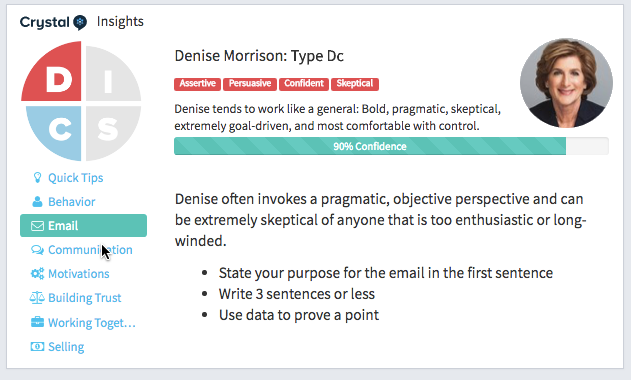 Other technologies like Adbeat (which coincidentally also integrates with Winmo), give ad sellers the ability to view enhanced digital ad intelligence to see where brands advertise, how much they’ve spent, ad networks they were routed through, and publisher destinations.
Other technologies like Adbeat (which coincidentally also integrates with Winmo), give ad sellers the ability to view enhanced digital ad intelligence to see where brands advertise, how much they’ve spent, ad networks they were routed through, and publisher destinations.
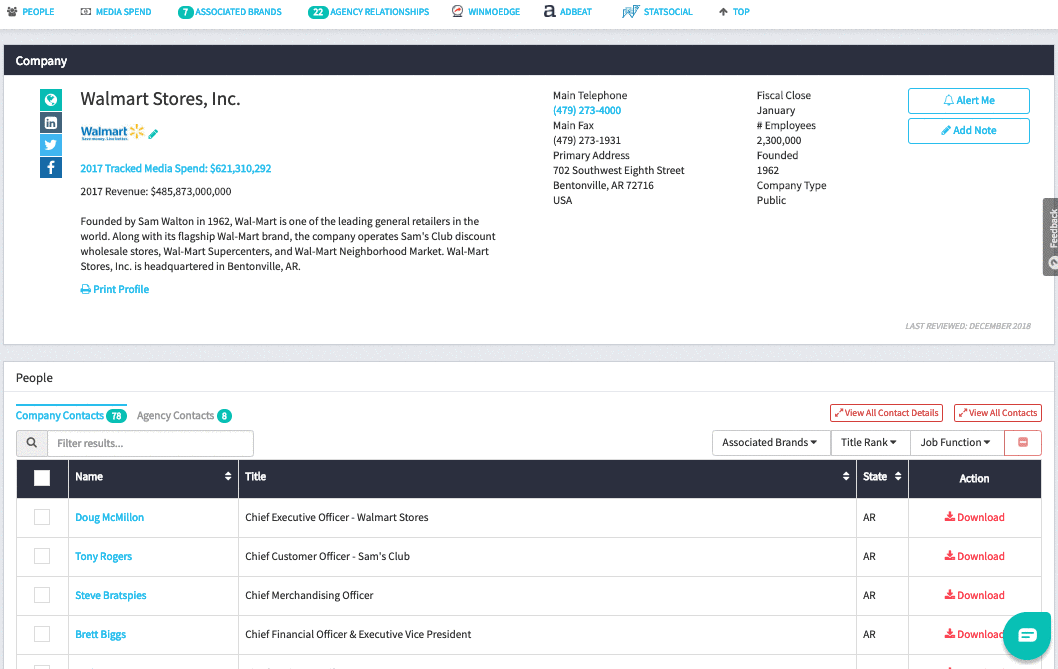 With access to a brand’s ad creative, landing pages, spend detail, and buying strategy, you can create side-by-side comparisons of a brand and its competitors to show a potential partner that you’ve done your homework.
With access to a brand’s ad creative, landing pages, spend detail, and buying strategy, you can create side-by-side comparisons of a brand and its competitors to show a potential partner that you’ve done your homework.
Crystal Knows and Adbeat are just two integrations that help ad sellers prospect strategically. Check out a full list of Winmo integrations here.
3. Build an effective email cadence
Once you understand your prospects needs and how they like to be addressed, it’s time to craft the email copy.
As mentioned earlier, your email marketing efforts should be short, valuable, and to the point. Persistence is key in scoring media deals, considering 80% of sales require at least five follow-ups. However, 44% of reps give up after just one follow up. The ideal email cadence is made up of at least three to five emails in order to warrant a response. To help get started, here’s a three-piece email cadence crafted by our very own top sales executives here at Winmo.
Email 1: Initial Outreach
Hi (prospect name),
As you’re currently planning your advertising and media initiatives – looking to partner with organizations that align with your team’s vision and revenue goals, (*organization*) would like to present you with a unique opportunity. Attached is a one-page deck that outlines who we are and how we’ve helped others in your space.
Do you have time next week for a 15-minute call?
Email 2: Follow Up #1
(Prospect Name},
While some people that reach out for us for their advertising and media needs aren’t the right fit, your core audience is one that we have a lot of experience targeting. Outlined below is a testimonial from a company we have partnered with in the past that had similar goals.
“Testimonial.”
Does tomorrow afternoon work for a quick chat?
Email 3-: Follow Up #2
Hey (prospect),
I wanted to bubble this back up to the top of your email. With your new CMO in place and looking to allocate media and advertising dollars by Q4, would there be an opportunity for us to connect to go over how (*organization*) will get you in front of your target audience in a way no other organization can?
Follow a few simple tips and tricks and keep an eye out for prospecting triggers, to remain one step ahead of your competition, and reach decision-makers at the right time. Since selling is all about timing. It’s imperative to pitch to a prospect when they’re ready to buy. Use personalization methods mentioned throughout our guide, your unique outreach will stand out.


